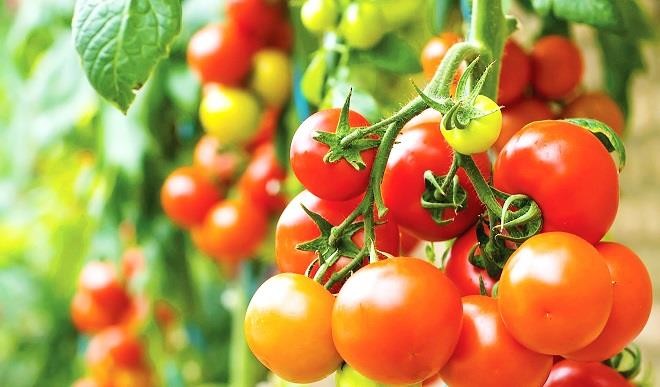Grow Healthy Tomatoes: Top Tips for Thriving Plants

Are you dreaming of juicy, ripe tomatoes straight from your garden? Imagine biting into a sun-warmed tomato, bursting with flavor—a far cry from the bland supermarket varieties. Growing healthy tomato plants is easier than you think, and with our top tips, you'll be harvesting a bountiful crop in no time. So, let's dive in and explore the best tips for growing healthy tomato plants.
Understanding Tomato Cultivation
Before we get our hands dirty, let's understand the basics of tomato cultivation. Tomatoes are warm-season plants, thriving in temperatures between 70-85°F (21-29°C). They need plenty of sun, water, and nutrients to produce their best fruit.
Choosing the Right Variety
Selecting the right tomato variety is like picking the right tool for the job. Do you want beefsteak tomatoes for sandwiches, cherry tomatoes for salads, or paste tomatoes for sauces? Consider your climate and growing conditions too. Some varieties are more disease-resistant or heat-tolerant than others.
Planting Tomatoes: Starting Off Strong
Location, Location, Location
Just like in real estate, location is crucial for tomato plants. They need at least 6-8 hours of sunlight daily. So, pick a spot that's sunny and sheltered from strong winds.
Soil: The Foundation of Success
Tomatoes prefer well-draining, fertile soil with a pH between 6.0 and 6.8. Add plenty of organic matter, like compost or well-rotted manure, to enrich the soil and improve its structure.
Planting Depth: A Tomato's Secret Weapon
Tomatoes are unique because they can grow roots along their stems. Plant your seedlings deep, burying about two-thirds of the plant. This encourages a robust root system, leading to healthier plants and better fruit.
Tomato Plant Care: Nurturing Your Plants
Watering: The Goldilocks Principle
Tomatoes need consistent moisture, but not too much or too little. Aim for about 1-2 inches of water per week, adjusting for rainfall. Water deeply and less frequently to encourage deep root growth.
Mulching: A Gardener's Best Friend

Mulch helps retain soil moisture, suppresses weeds, and regulates soil temperature. Apply a 2-3 inch layer of organic mulch, like straw or shredded leaves, around your plants.
Staking and Caging: Supporting Your Tomatoes
Tomatoes are vining plants and need support to grow upright. Use stakes, cages, or trellises to keep plants off the ground, improving air circulation and preventing disease.
Tomato Fertilizer: Feeding Your Plants
Tomatoes are heavy feeders and need plenty of nutrients to produce fruit. Use a balanced, organic fertilizer, or try compost tea for a nutrient-rich boost. Avoid high-nitrogen fertilizers, which can lead to lush foliage but few tomatoes.
Side-Dressing: A Mid-Season Boost
Once your plants start setting fruit, side-dress with compost or a balanced fertilizer. This gives plants an extra nutrient boost when they need it most.
Tomato Disease Prevention: Keeping Pests at Bay
Crop Rotation: A Simple but Effective Strategy
Rotate your tomato plants each year to prevent disease. Many tomato diseases live in the soil, so moving your plants to a new spot can help avoid infection.
Prune for Health: Improving Air Circulation
Prune your tomato plants to improve air circulation and reduce the risk of disease. Remove suckers (the small shoots that grow between the main stem and branches) and lower leaves that touch the soil.
Inspect Regularly: Catching Problems Early
Regularly inspect your plants for signs of pests or disease. Early detection makes it easier to treat issues and prevent them from spreading.
Harvesting and Storing Tomatoes: Enjoying the Fruits of Your Labor
Knowing When to Pick
Tomatoes are ready to pick when they're fully colored and give slightly when squeezed. Once they start ripening, check your plants daily to avoid missing any ripe fruits.
Storing Tomatoes: Keeping Them Fresh

Store tomatoes at room temperature, out of direct sunlight. Never refrigerate tomatoes, as it can make them mealy and flavorless. Use ripe tomatoes within a few days, or preserve them for later use.
Conclusion: Growing Tomatoes with Confidence
Growing healthy tomato plants is a rewarding experience. With the right care and attention, you can enjoy a bountiful harvest of delicious, homegrown tomatoes. Remember, the key to success lies in understanding your plants' needs and providing them with the best growing conditions. So, get out there and give it a try—your taste buds will thank you!
FAQs
Q: What's the best way to water tomato plants? A: Water tomato plants deeply and less frequently to encourage deep root growth. Aim for about 1-2 inches of water per week, adjusting for rainfall.
Q: How do I prevent blossom end rot in tomatoes? A: Blossom end rot is caused by a calcium deficiency, often due to inconsistent watering. Ensure your plants get consistent moisture and add a calcium-rich fertilizer if needed.
Q: Can I grow tomatoes in containers? A: Yes, tomatoes can be grown in containers. Choose a large pot (at least 18 inches in diameter) with good drainage, and use a high-quality potting mix.
Q: How do I deal with tomato hornworms? A: Handpick hornworms from your plants and drop them into soapy water. You can also use Bacillus thuringiensis (Bt), a natural bacterial pesticide, to control hornworms.
Q: Why are my tomato plants not setting fruit? A: Several factors can cause tomato plants not to set fruit, including extreme temperatures, lack of pollination, or insufficient light. Ensure your plants have the right growing conditions and attract pollinators to your garden.
Happy gardening! With these tips, you're well on your way to growing a thriving tomato patch. Don't forget to share your harvest with friends and family—there's nothing quite like a homegrown tomato.
0 Response to "Grow Healthy Tomatoes: Top Tips for Thriving Plants"
Post a Comment